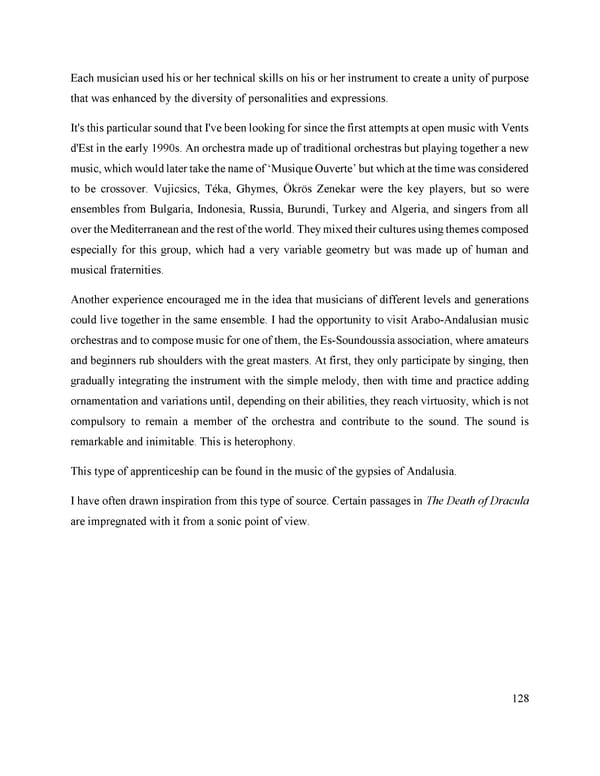Each musician used his or her technical skills on his or her instrument to create a unity of purpose that was enhanced by the diversity of personalities and expressions. It's this particular sound that I've been looking for since the first attempts at open music with Vents d'Est in the early 1990s. An orchestra made up of traditional orchestras but playing together a new music, which would later take the name of ‘Musique Ouverte’ but which at the time was considered to be crossover. Vujicsics, Téka, Ghymes, Ökrös Zenekar were the key players, but so were ensembles from Bulgaria, Indonesia, Russia, Burundi, Turkey and Algeria, and singers from all over the Mediterranean and the rest of the world. They mixed their cultures using themes composed especially for this group, which had a very variable geometry but was made up of human and musical fraternities. Another experience encouraged me in the idea that musicians of different levels and generations could live together in the same ensemble. I had the opportunity to visit Arabo-Andalusian music orchestras and to compose music for one of them, the Es-Soundoussia association, where amateurs and beginners rub shoulders with the great masters. At first, they only participate by singing, then gradually integrating the instrument with the simple melody, then with time and practice adding ornamentation and variations until, depending on their abilities, they reach virtuosity, which is not compulsory to remain a member of the orchestra and contribute to the sound. The sound is remarkable and inimitable. This is heterophony. This type of apprenticeship can be found in the music of the gypsies of Andalusia. I have often drawn inspiration from this type of source. Certain passages in The Death of Dracula are impregnated with it from a sonic point of view. 128
 Lost Analogue: Exploring Film, Music, and Interdisciplinary Methods in Education Page 128 Page 130
Lost Analogue: Exploring Film, Music, and Interdisciplinary Methods in Education Page 128 Page 130